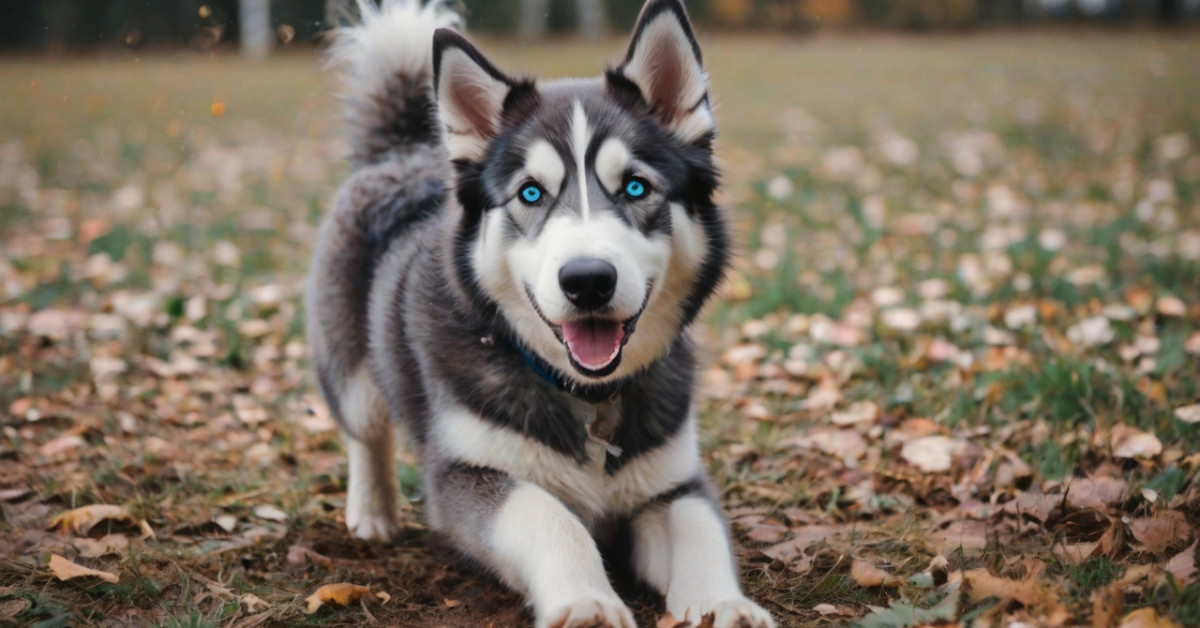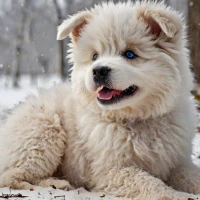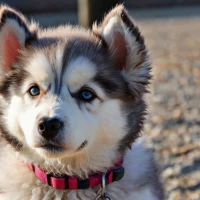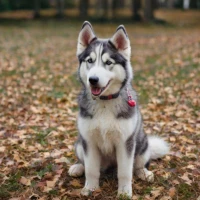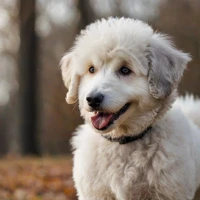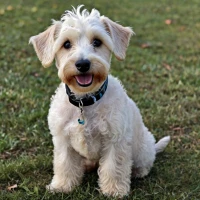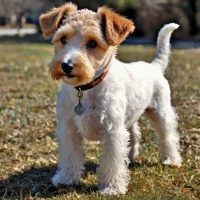The Energetic Huskydoodle: Balancing Play and Rest with This Mix
Ah, the joys and challenges of owning a Huskydoodle—a lively mix of a Siberian Husky and a Poodle! 🌟 Before diving into the specifics, let me share a wee anecdote about Tessa, a delightful Huskydoodle I once worked with. Tessa, blessed with sky-blue eyes and curly fur, was a paradox wrapped in fur. One moment, she’d be zooming around the yard like her tail was on fire; the next, she’d be sprawled on the couch, exhausted.
The Huskydoodle’s Character Traits
Huskydoodles, like Tessa, are brimming with energy and playfulness. They can be quite a handful, lemme tell ya! It’s not just about them burning a ton of energy, but also about keeping their minds stimulated. These mixes inherit the high-energy levels of the Husky and the intelligence of the Poodle. Trust me, this combo makes for a furry tornado if not properly managed.
Playtime Galore
When it comes to play, Huskydoodles are in a league of their own. They thrive on activities that challenge them both physically and mentally. Just the other day, my buddy Mark was telling me about his Huskydoodle, Rocky. He got Rocky a puzzle toy, and it was like Christmas morning. Rocky was all over it, figuring out the quirks and nuances in no time.
Think frisbees, fetch, agility courses—these are your new best friends if you’re a Huskydoodle owner. And don’t think just any ol’ walk will do; these guys need long, adventurous treks.
The Importance of Socialization
From my experience, socialization is paramount for this breed combo. Remember my neighbor Jane’s pup, Finn? Well, Finn used to be super shy around other dogs. We took him to a couple of doggy playdates, and voilà! Now he’s the life of the dog park. Regular playdates are crucial for helping Huskydoodles develop good social habits; they learn how to interact and play nicely with others.
Balancing Play and Rest
Striking the right balance between playtime and rest can be a bit of a tightrope walk. Over-exercising this breed can lead to exhaustion and potential health issues, while under-exercising can result in destructive behavior—nobody wants chewed-up furniture, right? I once knew a chap named Ben who made the mistake of leaving his Huskydoodle without proper exercise, only to come home to a room that looked like a tornado had swept through. Lesson learned!
Rest and Recuperation
It’s not just about the activities. It’s essential to give them a cozy spot to crash and recuperate. Soft beds, tranquil spaces, and, believe it or not, sometimes a bit of white noise can help. Random fact: Did you know dogs can find white noise soothing? It’s true!
Diet and Nutrition
Let’s not forget the role of diet in energy management. A well-balanced diet is pivotal. High-quality protein, healthy fats, and the right balance of vitamins can keep their energy levels stable and support recovery after a vigorous play session. Finn, who I mentioned earlier, saw a remarkable change in energy and temperament once Jane switched his diet to a more balanced one.
Grooming Challenges
Oh, and the grooming! With their unique double coats, Huskydoodles require regular grooming. When my friend Clarissa brought her Huskydoodle, Bella, to me, the poor thing was a tangled mess! Regular brushing and occasional trims are a must to keep them looking spiffy and avoid skin problems.
Training Tips
Training a Huskydoodle isn’t a walk in the park but boy, is it rewarding. These dogs are smart, sometimes too smart for their own good. It’s like they know what you’re thinking before you even say it. Consistent training with positive reinforcement is key. Patience, my friend, is vital.
Just a quick tip: using their favorite treats as rewards can work wonders. My pal Clara found that her Huskydoodle, Ace, would do just about anything for a piece of cooked chicken. Motivation is everything when it comes to training.
Mental Stimulation
These dogs aren’t just physically active; they need mental challenges too. Puzzle toys, training sessions, and interactive games are excellent ways to keep their minds sharp. Remember, a bored Huskydoodle can become a mischievous one.
I remember when Mark tried a new strategy with Rocky. He started teaching Rocky new tricks and commands every week. Not only did it keep Rocky engaged, but it strengthened their bond significantly.
The Role of Routine
Establishing a routine can help balance play and rest. Set specific times for walks, meals, play, and rest. This not only keeps their energy levels in check but also helps with training and behavioral issues.
Health Considerations
Huskydoodles can be prone to certain health issues common in their parent breeds, such as hip dysplasia and eye problems. Regular vet check-ups are vital to catch any potential issues early. But hey, here’s a fun fact: Huskies have a natural resistance to cold, thanks to their Siberian heritage. Isn’t that neat?
Personal Reflection
Overall, owning a Huskydoodle is a bit like raising a child—they need your time, love, and structure to thrive. Balancing play with rest is essential for their well-being and your peace of mind. After all, a happy dog makes for a happy home.
Conclusion
In closing, balancing the high energy levels of a Huskydoodle with the necessary rest takes commitment and understanding. But the joy and companionship they bring are absolutely worth it. Thanks for sticking around and reading my musings on this marvelous mix. Catch ya later! 🐾
